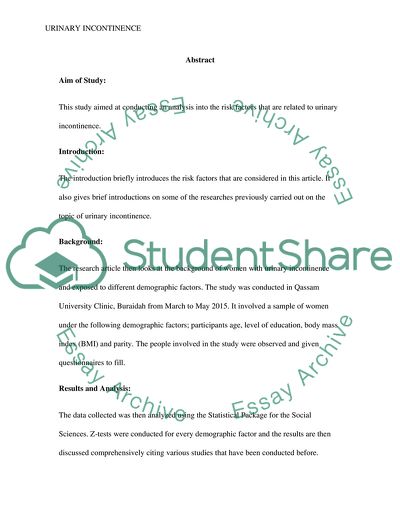Urinary incontinence Article Example | Topics and Well Written Essays - 500 words. Retrieved from https://studentshare.org/health-sciences-medicine/1698977-urinary-incontinence
Urinary Incontinence Article Example | Topics and Well Written Essays - 500 Words. https://studentshare.org/health-sciences-medicine/1698977-urinary-incontinence.


